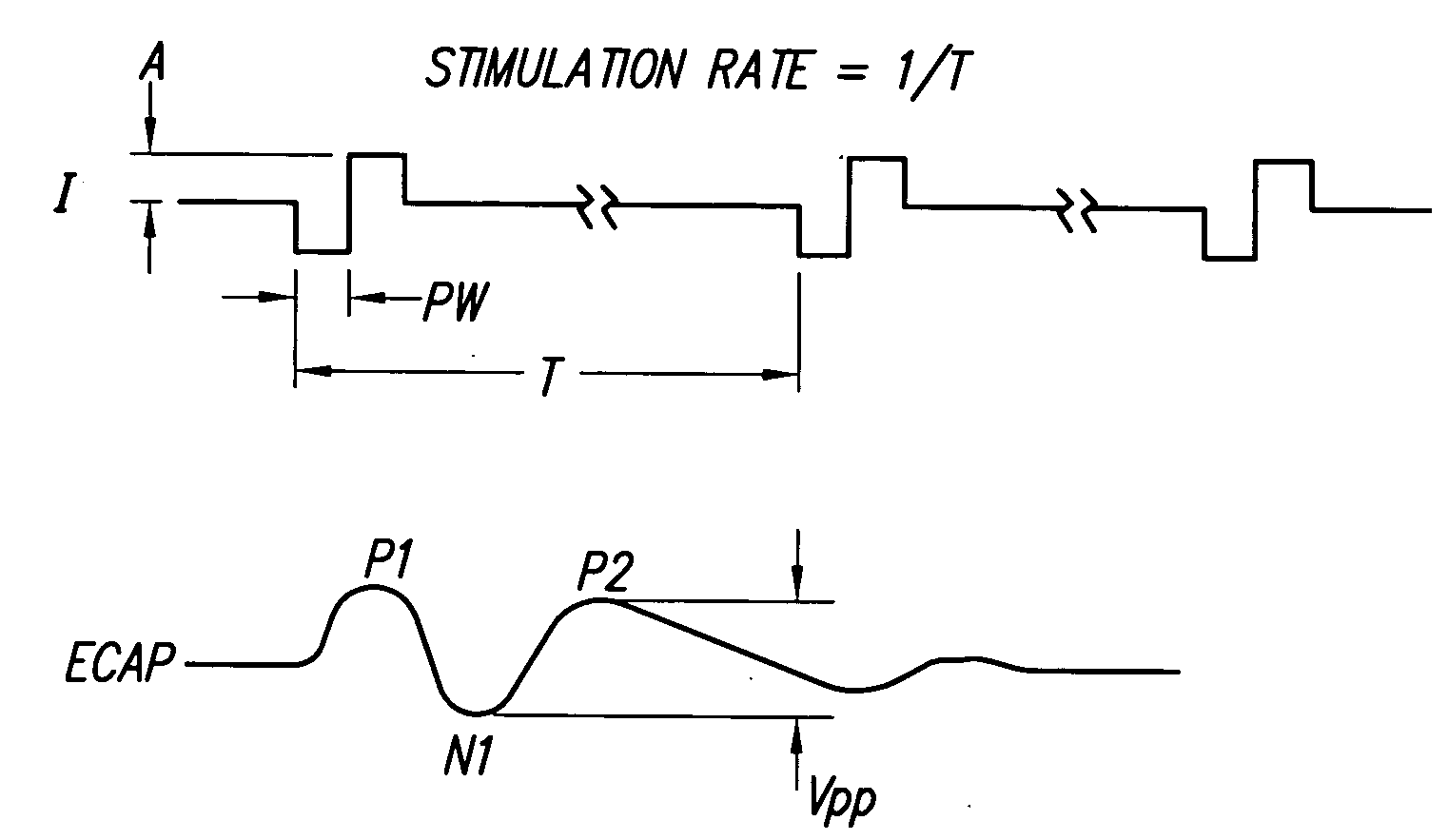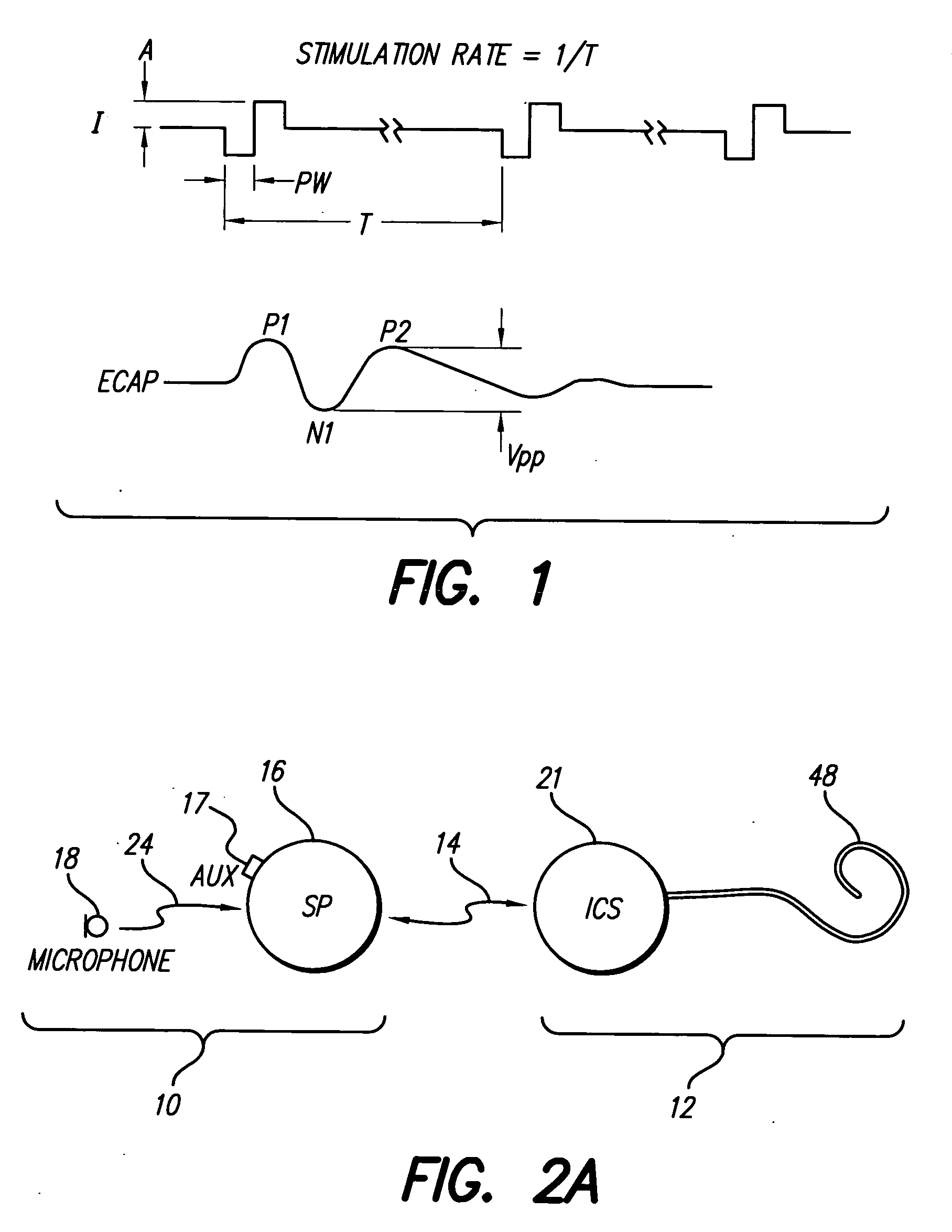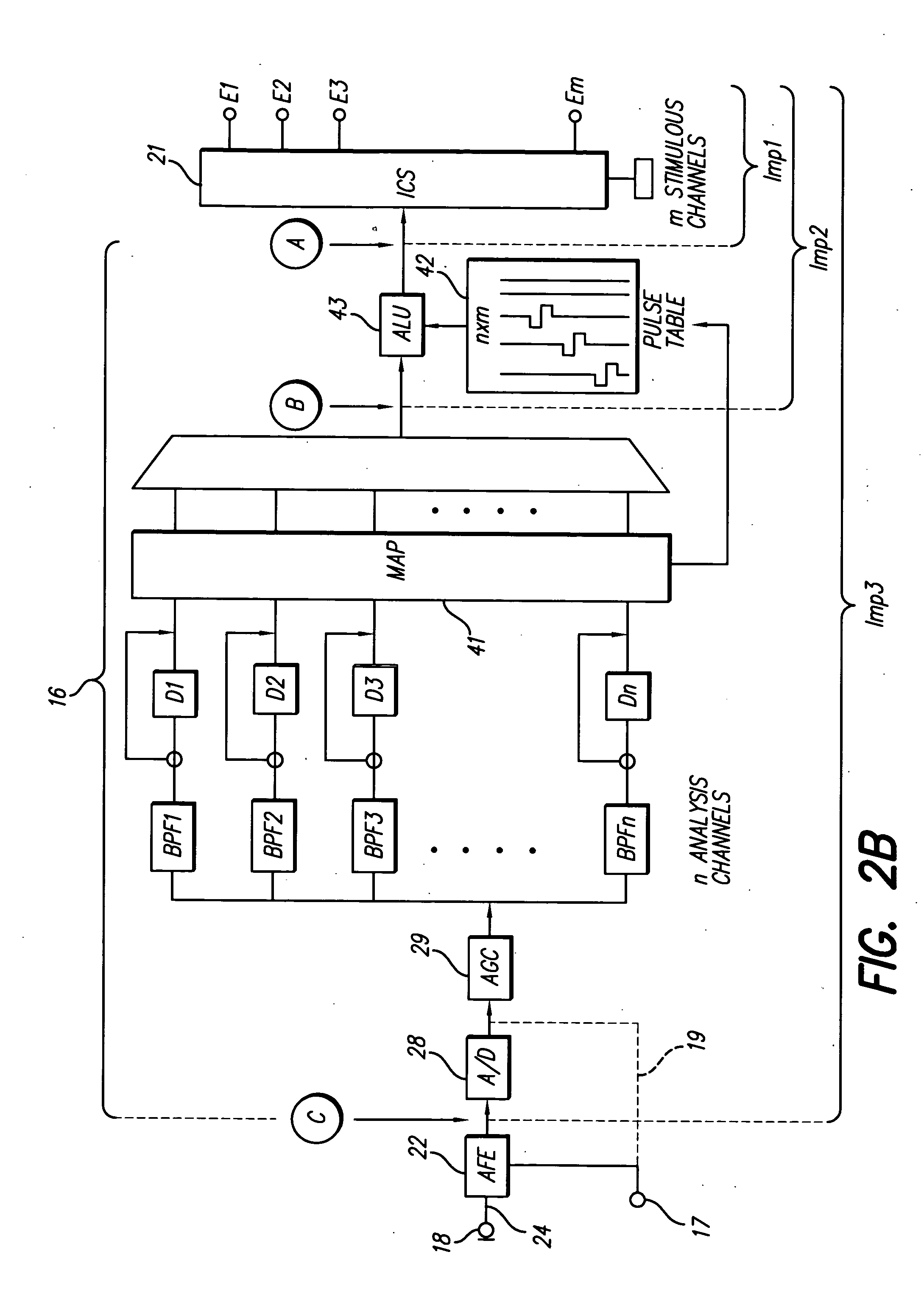Multi-electrode stimulation to elicit electrically-evoked compound action potential
a multi-electrode, compound action potential technology, applied in electrotherapy, therapy, etc., can solve the problems of inability to provide meaningful subjective feedback, inability to fully control and customize the operation of the cochlear, and the implanted portion of the cochlear stimulation system. to achieve the effect of better determining the appropriate intensity threshold level
- Summary
- Abstract
- Description
- Claims
- Application Information
AI Technical Summary
Benefits of technology
Problems solved by technology
Method used
Image
Examples
Embodiment Construction
[0040]The following description is of the best mode presently contemplated for carrying out the invention. This description is not to be taken in a limiting sense, but is made merely for the purpose of describing the general principles of the invention. The scope of the invention should be determined with reference to the claims.
[0041]FIG. 1 shows a current stimulation waveform (I) and a corresponding evoked compound action potential (ECAP). FIG. 1 defines the stimulation rate (1 / T), amplitude (A) and biphasic pulse width (PW) associated with the current stimulation waveform. FIG. 2 also illustrates a typical ECAP waveform that is evoked in response to the applied current stimulation waveform. Such ECAP waveform is typically characterized by three humps, or peaks, labeled P1, N1, and P2. The first peak P1 is, as illustrated in FIG. 1, a positive peak and is often difficult to measure, as it may be swamped out by other electrical activity. The second peak N1, as illustrated in FIG. 1...
PUM
 Login to View More
Login to View More Abstract
Description
Claims
Application Information
 Login to View More
Login to View More - R&D
- Intellectual Property
- Life Sciences
- Materials
- Tech Scout
- Unparalleled Data Quality
- Higher Quality Content
- 60% Fewer Hallucinations
Browse by: Latest US Patents, China's latest patents, Technical Efficacy Thesaurus, Application Domain, Technology Topic, Popular Technical Reports.
© 2025 PatSnap. All rights reserved.Legal|Privacy policy|Modern Slavery Act Transparency Statement|Sitemap|About US| Contact US: help@patsnap.com



